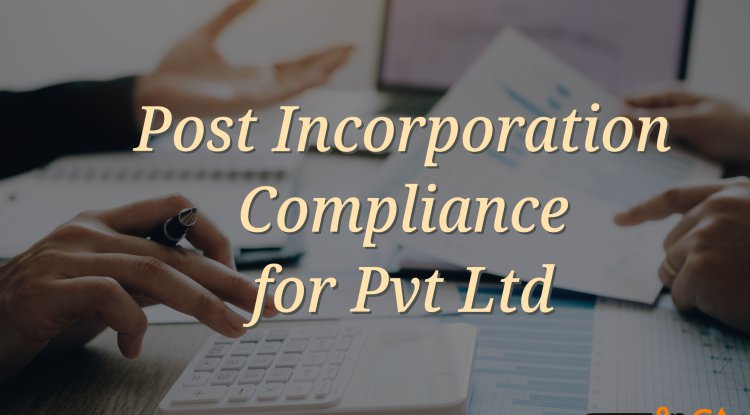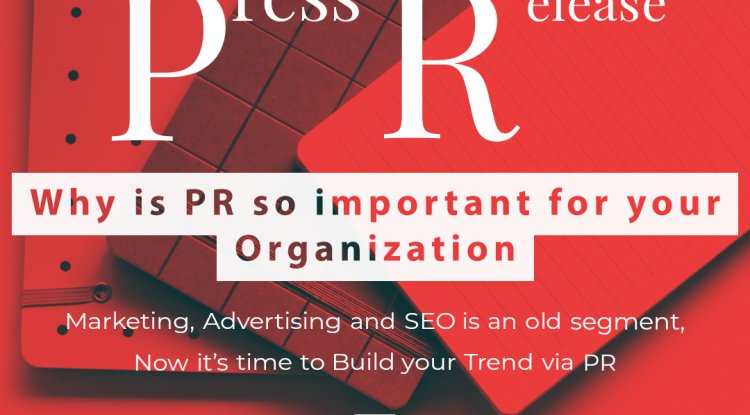What is the Pharmaceutical Promotion Development Scheme (PPDS)?
The Pharmaceutical Promotion Development Scheme (PPDS) is intended to promote, expand, and promote. Promotion of exports to the pharmaceutical industry the Department of Pharmaceuticals, under PPDS, on its By way of grant-in-aid to institutions, organizations, charitable agencies, or by financial sponsorship, As stated in Rule 206 of GFR 2005, organizations or NGOs:

1. What is the Cluster Development Scheme (CDS)?
The Pharmaceuticals Department (DOP) announced the Cluster Development Scheme.
The July 2014 Pharmaceutical Sector Program to improve quality, efficiency, and innovation
The strengths of the country's SME pharmacy market.
2. What is the Pharmaceutical Promotion Development Scheme (PPDS)?
The Pharmaceutical Promotion Development Scheme (PPDS) is intended to promote, expand, and promote. Promotion of exports to the pharmaceutical industry the Department of Pharmaceuticals, under PPDS, on its By way of grant-in-aid to institutions, organizations, charitable agencies, or by financial sponsorship, As stated in Rule 206 of GFR 2005, organizations or NGOs:
1) Conduct training/knowledge programs/activities for progress on issues/subjects related to pharmaceutical industry development.
2) Summits, conferences, exhibits, pharmacy week, meetings, etc. are arranged in India and abroad and produce advertising materials such as videos, exhibits, etc.
3) Carry out feasibility studies, industry analysts, etc.
4) Purchasing books, levels of quality, pharmacopeias, magazines, directories, apps for Creation of databases of knowledge, creation of e-learning modules, etc.
5) Provide awards to achievers in the pharmaceutical business.
6) For any other operation which is not protected by the above definitions and which may be subject to Chosen from time to time by the Pharmaceuticals Department.
3. What is PCPIR?
Four petroleum, chemical, and petrochemical investment regions were approved by the Government of India. (papers) in Andhra Pradesh State (Visakhapatnam), Gujarat State (Dahej), Odisha State (Paradeep State), and In order to encourage investment and industrial growth in Tamil Nadu (Cuddalore and Nagapattinam), These industries. The PCPIR is designed to benefit from co-siting, networking, and greater advantages. Efficiencies by using common facilities and by delivering support services. Specifically, each PCPIR is a delineated region with an area of approximately 250 sq. The Km. Where 40 percent of the surface must be for Activities in manufacturing.
4. What is the Chemical Promotion Development scheme (CPDS)?
The Implementation Scheme for Chemical Promotion development scheme designed to promote Through the extension of financial support for the conduct of the chemical & petrochemical sectors and the growth of In order to promote development, seminars, conferences, exhibitions, studies/consultancies, as well as Review of important problems concerning the chemical and petrochemical industries.
5. What is CWC?
The Convention on Chemical Weapons is a general, non-discriminatory, multilateral, disarmament treaty that prohibits the production, manufacture, procurement, transfer, use, and storage of all chemical weapons. Both States Parties are placed on an equal footing by the treaty. Countries that have chemical stockpiles In a stated time frame, weapons must be declared and destroyed and those manufacturing them Chemicals that can easily be turned into chemical weapons must be open and open to use and To be clear about the use of such weapons.
6. What are OCPFs?
Two separate types of organic chemicals include OCPFs and these are distinct organic chemicals. Chemicals (DOCs) and chemicals with PSF.
7. What is a DOC?
As any chemical belonging to the class of chemical compounds, the discrete organic chemical is defined Including the exception of its oxides, sulfides, and metal carbonates, made of all carbon compounds, Identifiable by chemical name, (if known) structural formula, and Chemical Abstracts Service(CAS) registry (if assigned) number.
8. What are the objectives of the scheme for setting up of plastic parks in India?
The key objectives of the scheme are 1) Increasing competition, absorption of polymers, In the domestic downstream plastic processing sector, capability and value addition through the Adaptation of modern measurers, driven by research and development. 2) Growing investment in the sector Industry through capacity and production additions, quality infrastructure development, and other Facilitation to ensure that value is added and exports increase. 3) Achieving environmentally sound practices. Development by creative waste management techniques, recycling, etc. 4) Implement a cluster Approach to growth to achieve the above objectives due to its benefits resulting from resource optimization and economies of scale.
9. What is the meaning of SCOMET?
The acronym for Special Chemicals, Organisms, Structures, Equipment, and Technology is SCOMET.
10. What are dual-use goods and technologies?
Goods, software, technology, chemicals, etc. that can be used for both civil and civil purposes are dual-use products. Applications from the military. Such products require an export permit from the government. India's SCOMET list is known as the list of products that require an export license.
11. Is the export of SCOMET items regulated?
Yes, exports of products on the SCOMET list are governed in compliance with the Foreign Trade Policy of India. The exportation is either forbidden or allowed under a permit.
12. Where can we find the list of SCOMET items?
Appendix 3 of ITC (HS) Classification Schedule 2 includes the control list of India, which is also included in the control list of India. Referred to as the list of SCOMET. To see the full list, you can go to the DGFT website. In the list as seen, The SCOMET items appearing in Appendix 3 of Schedule 2 of the ITC (HS) Classification are classified under Eight (9) categories: (a) Category 0: nuclear materials, all materials related to nuclear materials, Technology and facilities. (b) Class 1: chemical agents with toxicity and other chemicals. (c) Categories 2:Toxins, micro-organisms. (d) Group 3: Products, processing equipment for products, and related equipment Technology. (e) Group 4: other equipment, assemblies and components related to nuclear power; research and research; Manufacturing equipment; and related technologies not controlled by Category 0.0 (f) 5th category: Aerospace systems, facilities, including facilities for manufacturing and research, related technologies and Specially made parts and accessories. (g) Category 6: List of Munitions. (h) Categories 7:Computers, electronics, and information technology, including the security of information.
13. Who gives license for Category 0 items in the SCOMET list?
The ITC (HS) Department of Licensing Authority for Products in Category 0 in Appendix 3 to Schedule 2 is the Department of About Atomic Energy. The Atomic Energy Department informed of the relevant guidelines under the Atomic Energy Act, 1962. For certain items in Category 0, formal promises shall be made by the receiving State for certain items in Category 0. Non-use is used with every nuclear explosive device. Export authorizations for certain products in Class 0 shall not be provided unless, in addition, the move is subject to sufficient physical security and protection. Necessary International Atomic Energy Agency (IAEA) protections, or any other protections, are protected. On transferred products, mutually agreed to controls. Export of the items listed in Note 2 of the Item Notes The SCOMET list 'Commodity Identification Note' will also be allowed against an Authorization issued by the Atomic Energy Agency.
14. What are the documents to be submitted for the application on SCOMET Authorization?
When making the submission, the following documents need to be submitted online: I End-Use-command User Certificate(s) (EUC) from all companies/entities involved in the product(s) supply chain. (to be duly signed by the approved signatory on their letterhead). (ii) Copy(s) of the
Purchase Order(s) of the company(s) involved in the item/product supply chain. (iii) Type Aayat Niryat (ANF)-1 (Exporter's Profile). (iv) Create a technical specification relating to an export object. v) Copy(ies) of the supply contract/agreement {if only the appropriate section containing the supply contract/agreement documents are bulky Reference to the contract and the parties to the contract and the section showing the item(s) to be given A quantity not exceeding 10 pages must be uploaded). (vi) Copy of the authorization of DGFT Letter for the same commodity, if any, in the case of a repeat order application. Hard copy (copy on paper) of It is appropriate to apply the following documents to DGFT (HQ): I Initial End Use-cum-End Use-cum-End Use(EUC) User Credential. (ii) Copies of Bills of Entry for products shipped to the destination country Over the last year.
15. What are the restrictions on the export of chemicals as per the SCOMET list?
It is forbidden to export Category 1A chemical products. b. The export of chemicals specified in Category 1B shall be subject to the Allowed only to States Parties to the Convention on Chemical Weapons after receiving an authorization DGFT. From. List of State Parties to the Convention on Chemical Weapons (CWC) and countries of the Convention on Chemical Weapons (CWC) Non-State Parties can be found on the OPCW website page. c. Chemicals Exports in the Category 1C are authorized without an export license by the State Parties to the CWC, subject to the condition that the export license is issued. The exporter shall inform the National Authority of Chemical Weapons within 30 days of the sale, Convention, Cabinet Secretariat; the Department of External Affairs (D&ISA); the Ministry of External Affairs; Chemicals & Petro-chemicals, and the DGFT in the prescribed format of such exports (Aayat Niryat) Form) along with the End-Use Certificate and a copy of the bill of entry into the DGFT
State Party of destination within 30 days of delivery. Export of Category 1C chemicals to non-states Parties to the Convention on Chemical Weapons shall remain restricted and shall continue to be restricted. Limited and permitted only against the export license and the EndUseCertificate signed by the Government and, in that case, the exporters shall also apply to the DGFT a copy of the bill of entry in the EndUseCertificate. country of destination within 30 days of delivery. d. SCOMET sub-category 1D, entitled 'Other Chemicals' comprises 25 chemical precursors regulated by AG. 1. Chemicals exportation in these group countries mentioned in Table 1 (given in category 1D) without an export license are required to be subject to an export license. Given that the exporter notifies the required departments within 30 days, 2. The exportation of products Chemicals in this group is limited to other countries and will be permitted only against and against the Export license and, in that case, a copy of the bill of entry shall be sent by the exporter to the DGFT. Within 30 days of delivery, the destination country. 3. In Table 1, the countries include Argentina, Croatia, Cyprus Republic, Czech Republic, Denmark, Australia, Austria, Belgium, Bulgaria, Canada, Croatia, Great Britain, Estonia, Finland, France, Germany, Greece, Hungary, Iceland, Ireland, Italy, Japan, Korea, Spain, Latvia, Lithuania, the Netherlands, Luxembourg, Malta, Mexico, New Zealand, Norway, Poland, Portugal, Riyadh, Portugal, Spain, Sweden, Switzerland, Turkey, Ukraine, UK, Romania, Slovakia, Slovenia, Spain, United States. U.S. e. Notification No. 56(RE-2013)/2009-14 dated 12.12.2013 has been removed as of 12.12.2013. Class 1D now contains the three chemicals covered in the notice.
16. What is the FDI limit in the chemical sector?
In the chemicals market, 100 percent foreign direct investment ( FDI) is authorized under the automatic path.
17. Who are the key stakeholders in the Chemicals sector in India?
In addition to the Chemicals & Petrochemicals Department, the Ministry of Chemicals & Fertilizers (Govt.Invest India), the following are some of the main industry associations:-Alkali Manufacturers Association of Synthetic Fibre Industry Producers of Chemicals & Petrochemicals of India Association of CropLife India Dye Manufacturers India Indian Chemical Council Association Indian Chemical Council Organizations of Plastic Processors of India Speciality Chemical Manufacturers Association The All Plastic Manufacturers Association of India.
What's Your Reaction?




















